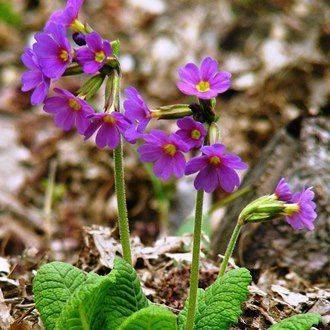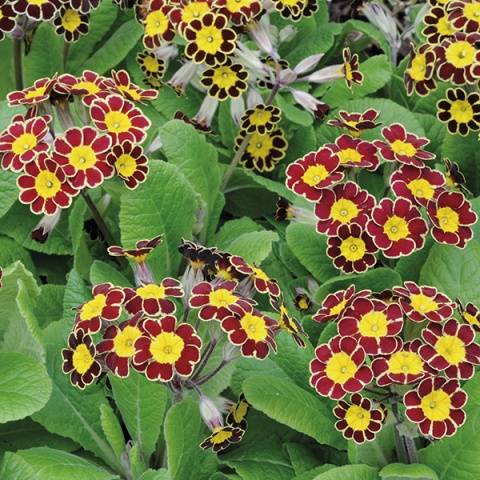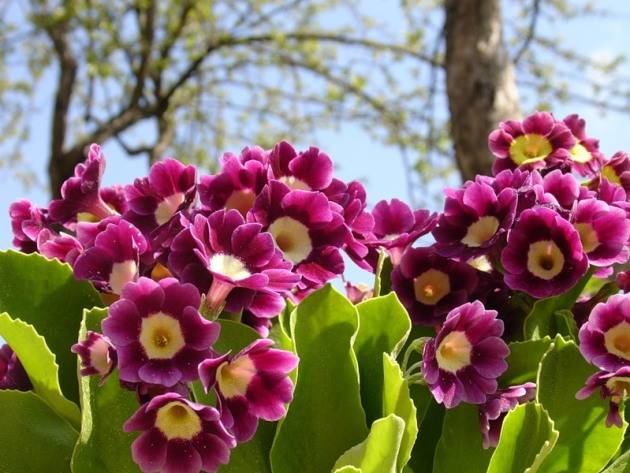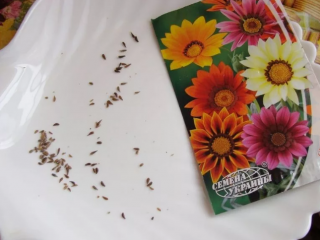Content
The delicate primrose is one of the first to decorate gardens in spring. Primroses are most often grown in open ground, planted in containers on balconies, and there are indoor varieties. A variety of colors of several varieties will create a real rainbow in the yard.
Description
Primroses belong to the Primrose family; their genus now includes 390 species that grow on all continents. There are varieties listed in the Red Book of the Russian Federation. Plants bloom in early spring, except for various bulbous flowers. Hence the Latin name for primroses: “primus” - “first”. Many nations have their own touching legends about an elegant flower that announces the coming warm days. In England, there have been clubs for primrose lovers for several centuries, and colorful exhibitions are held annually.
Despite the diversity of species, plants have common features. Wild primroses prefer damp areas: near streams, in meadows, where their rhizomes and roots are free to grow. Oblong, oval, finely toothed leaves form a rosette.Some species have tall peduncles, while others have low flowers. Flowers of different shades are tubular in shape with a funnel-shaped or flat bend. The seeds ripen in a round or cylindrical achene.
Types and varieties
Several types of primroses are cultivated in open ground; there are many varieties. If a gardener is seriously interested in primroses, then even just from different types of primroses you can create a garden of constant flowering. There are varieties that begin their rainbow parade in mid-April, others begin flowering in May, June and even at the end of summer.
Spring primrose
In April, the spring primrose or primrose blooms. The plant has many popular names based on visual perception: rams, golden or heavenly keys. The yellow primrose is associated with a Russian legend about the keys that open doors into summer. Others talk about the keys to heaven - where St. Peter dropped the keys, golden flowers grew there.
The veins are clearly visible on the wrinkled oval leaves. The length of the leaf is up to 20 cm, width 6 cm, the bottom of the blade is slightly pubescent. A peduncle up to 30 cm bears an umbrella inflorescence - a “bundle” of yellow fragrant flowers resembling keys.
Primula vulgare
The species is also called stemless primrose or acaulis. Large flowers of varied colors on low peduncles create lovely bright cushions on rich green leaves. Plant height is 10-12 cm, flower diameter is up to 3-4 cm. Hybrid primroses have a rich palette of shades of simple or double flowers. Flowering is long - up to 40-50 days.Planting primrose bushes in open ground is possible when the threat of frost has passed. Interesting common varieties:
Virginia
Plant height up to 20 cm, flowers 3-4 cm, white, yellow center. Located one on a peduncle.
Cerulea
The flowers are 2.5 cm, sky blue with a yellow center, collected in inflorescences of 10 pieces.
Atropurpurea
The plant produces a dense inflorescence of dark red flowers with a yellow center. Flower diameter is 2-3 cm.
Primrose high
It is also an early flowering species with rather high, up to 20 cm, peduncles on which several inflorescences are created. The range of colors is varied and very catchy, especially from the Gold Lace group. Terry varieties have been bred. Flowering in good conditions: planting in open ground, not under the hot sun and with careful care, lasts up to 2 months, in April-May.
Alba
The umbrella bears 7-10 white flowers with a yellow center.
Gelle Farben
The flowers are light purple, up to 3.5 cm in diameter.
Gold Lace
Bright flowers with a light border and a yellow throat. The color of the petals ranges from bright pink to deep brown. Diameter 2.5-3.5 cm.
Fine-toothed
In mid-May, gardeners are pleased with the prominent primrose, in which many flowers form on a high 40-60-centimeter peduncle. Multi-colored balls in the open ground in a flower bed look amazing.
Ruby
Low-growing variety, up to 30 cm, large raspberry inflorescence – 6-8 cm.
Rubra
Bright purple 10-centimeter balls rise from a rosette on 10-15 peduncles.
Alba
Small white flowers, no more than 1.5 cm, form a spectacular large inflorescence.
Primrose Julia
Low-growing bushes of this species also show off in May. When primroses are planted in open ground, this species can be moved first as it is the most frost-resistant.Raspberry-purple flowers spread in an impressive continuous carpet. The plant looks beautiful in rock gardens.
Primula Ushkovaya
These primroses bloom in May. Very popular in Great Britain, they are often called auricula (Latin for “ear”). The plant is sometimes called "bear's ear" because of its round, leathery, pubescent leaves. The leaf blade is green-blue with raised edges inward. The plant is low, up to 15-20 cm, in inflorescences there are 5-10 flowers. English breeders have developed a variety of hybrids of various colors. It is interesting that the seedlings do not repeat the color of the mother plant.
Primula Siebold
The low-growing primrose blooms at the end of May. The plant has bright green leaves that dry up along with the flower stalks after flowering. Pink, white or lilac flowers are collected in loose inflorescences. The transformation of an ephemeroid flower must be taken into account when caring and the planting site must be marked so as not to damage the dormant plant.
Primula Candelabra
The species is magnificent, but not widespread, blooms in summer. Primrose has a tall, up to 50 cm, peduncle with purple and orange flowers arranged in tiers.
Primula Florinda
Blooms in late summer. It is also rare among us. Bright orange flowers in the shape of delicate bells are raised on high, up to 80 cm, peduncles.
Reproduction
In the garden, primroses reproduce by self-sowing. In good conditions they can crowd out some plants. But to do this, you first need to plant the bushes so that they take root. Gardeners sow elegant flowers by seed through seedlings or directly into the soil in a flower bed. Flowers are also propagated by dividing bushes and rooting leaf petioles.
Seeds
Primroses are sown in spring, summer and before winter. Plants will bloom in the 2-3rd year.
- In spring, primrose is sown with seeds in open ground after the snow melts;
- Summer sowing is effective because the seeds are fresh and germinate quickly. You just need to keep the soil moist for better seed germination;
- Having saved the seeds until autumn, primroses are sown so that they germinate early in the spring.
Many gardeners buy seeds in late summer or autumn, as soon as they appear in the retail chain. Sow in containers that are dug into the soil in the garden.
Seedlings
The most difficult stage in growing primrose is waiting for germination. Sowing begins in February.
- The substrate is prepared from garden soil, sand and turf soil in a ratio of 2:1:1;
- The seeds are laid out on the surface of the soil, lightly pressing into the soil;
- The container, wrapped in polyethylene, is placed in the freezer for a month to stratify the seeds;
- The thawed container in the bag is placed on the windowsill, where the temperature is kept at 16-18 degrees. The soil is moistened. Air humidity should also be high. The package is opened slightly with the first sprouts, and then, after 10-15 days, removed;
- The development of seedlings is very slow. In the third leaf phase, the sprouts dive. Transplants are done several times as the flowers grow;
- Seedlings are transferred to open ground after two years, replanting the plants in new soil each time they grow;
- Some gardeners plant young seedlings in open ground immediately in the summer, at the two-leaf stage.
By division
It is better to replant primrose bushes in August, early September or spring, before flowering. Divide after 3-5 years of growth for rejuvenation and reproduction.
- The rhizomes are dug up, washed and cut into pieces with a sharp knife, making sure that they have buds;
- The cuttings should be sprinkled with wood ash and the rhizomes should be planted immediately;
- The bushes are watered daily for 2 weeks;
- For the winter, the transplanted flowers are covered with leaves and spruce branches.
Petioles
Young primroses are propagated using this method. Select a leaf, carefully cut it along with the bud and place it in a pot with soil and sand. The leaf blade is also cut by a third. The container is placed in a bright, but not sunny, cool place, up to 16-18 degrees. The soil is kept moist. Over time, shoots develop from the bud.
Growing
Beautiful plants can sometimes be capricious, just like primroses. When they are planted in open ground, a suitable site is carefully selected.
- For better survival, primroses are placed in light partial shade, under the crowns of trees, where the sun shines only in the morning;
- The site should be predominantly moist but well drained;
- Planting primrose and caring for the plant in open ground requires attention from the gardener. Plants prefer fertile loamy soil and are afraid of stagnant water;
- When preparing a place for primroses, the soil is enriched with humus, peat, leaf soil, and a tablespoon of complex fertilizer is added per square meter;
- Primroses are not planted in rock gardens located on the south side of the garden. Plants do not tolerate direct sunlight;
- Most varieties of primroses are winter-hardy. The plants are only covered with spruce branches. Hybrids are transplanted into pots for the winter.
Watering
Primroses love moist soil, without stagnant water.
- Plants are watered every week with 3 liters per 1 square meter. m;
- Make sure that water does not get on the leaves;
- The soil is loosened and removed weeds.
Feeding
Caring for primrose in open ground involves regular application of fertilizers.
- In early spring, per 1 sq. m apply 15 g of nitrogen fertilizing;
- After two weeks, the soil under the primroses is fertilized with 15 g of superphosphate;
- Phosphorus-potassium fertilizers are given in July or August.
Beautiful flowers need care. But their flowering compensates for the time spent.



























